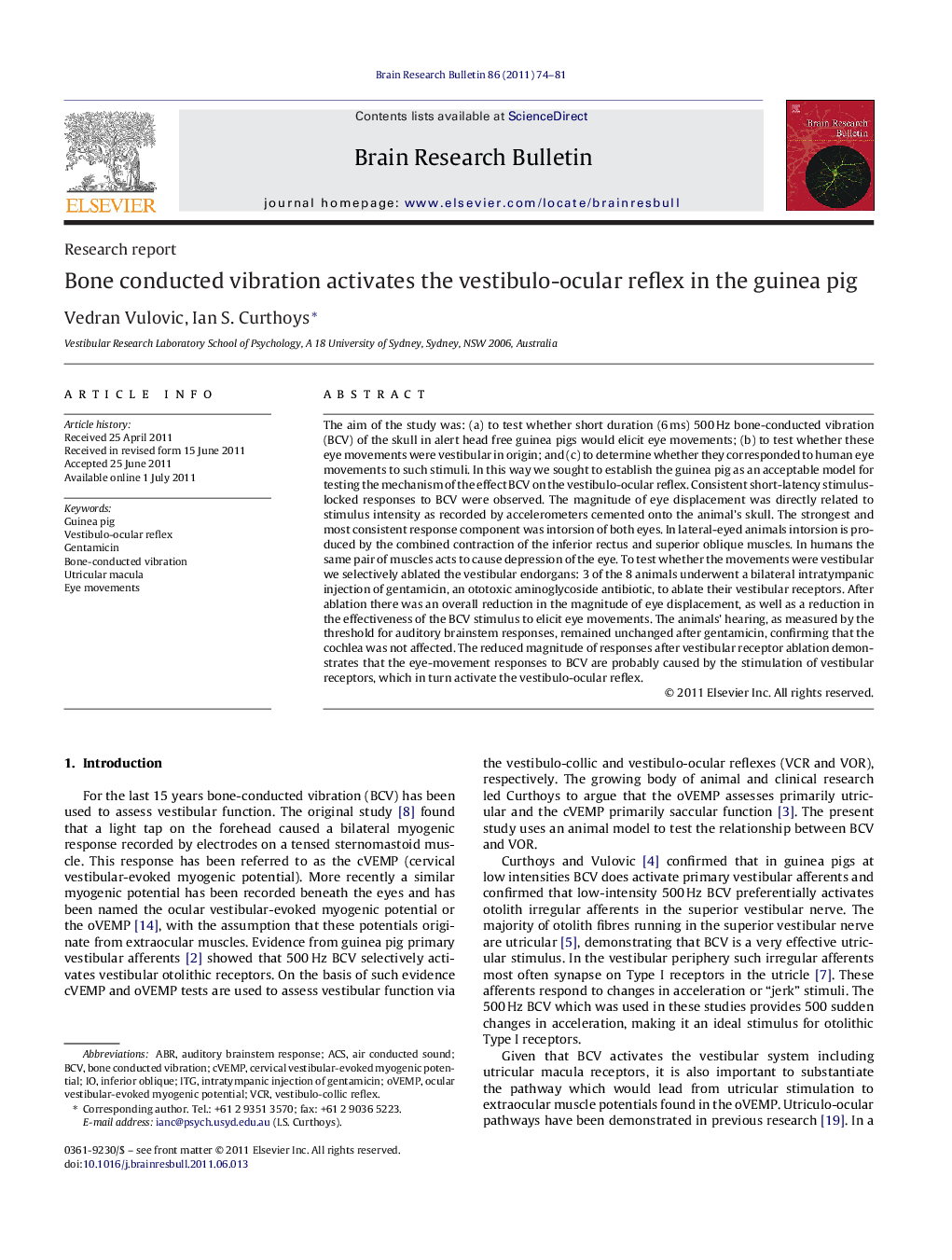| Article ID | Journal | Published Year | Pages | File Type |
|---|---|---|---|---|
| 6262177 | Brain Research Bulletin | 2011 | 8 Pages |
The aim of the study was: (a) to test whether short duration (6Â ms) 500Â Hz bone-conducted vibration (BCV) of the skull in alert head free guinea pigs would elicit eye movements; (b) to test whether these eye movements were vestibular in origin; and (c) to determine whether they corresponded to human eye movements to such stimuli. In this way we sought to establish the guinea pig as an acceptable model for testing the mechanism of the effect BCV on the vestibulo-ocular reflex. Consistent short-latency stimulus-locked responses to BCV were observed. The magnitude of eye displacement was directly related to stimulus intensity as recorded by accelerometers cemented onto the animal's skull. The strongest and most consistent response component was intorsion of both eyes. In lateral-eyed animals intorsion is produced by the combined contraction of the inferior rectus and superior oblique muscles. In humans the same pair of muscles acts to cause depression of the eye. To test whether the movements were vestibular we selectively ablated the vestibular endorgans: 3 of the 8 animals underwent a bilateral intratympanic injection of gentamicin, an ototoxic aminoglycoside antibiotic, to ablate their vestibular receptors. After ablation there was an overall reduction in the magnitude of eye displacement, as well as a reduction in the effectiveness of the BCV stimulus to elicit eye movements. The animals' hearing, as measured by the threshold for auditory brainstem responses, remained unchanged after gentamicin, confirming that the cochlea was not affected. The reduced magnitude of responses after vestibular receptor ablation demonstrates that the eye-movement responses to BCV are probably caused by the stimulation of vestibular receptors, which in turn activate the vestibulo-ocular reflex.
⺠In this study we delivered bone-conducted vibrations and measured resulting eye movements in guinea pigs. ⺠We recorded eye movements consistent with utricular stimulation. ⺠The eye movements found in guinea pigs were consistent with those found in humans. ⺠Intratympanic gentamicin was administered to some animals. ⺠There was a significant reduction in eye movement magnitude after gentamicin, confirming their vestibular origin.
